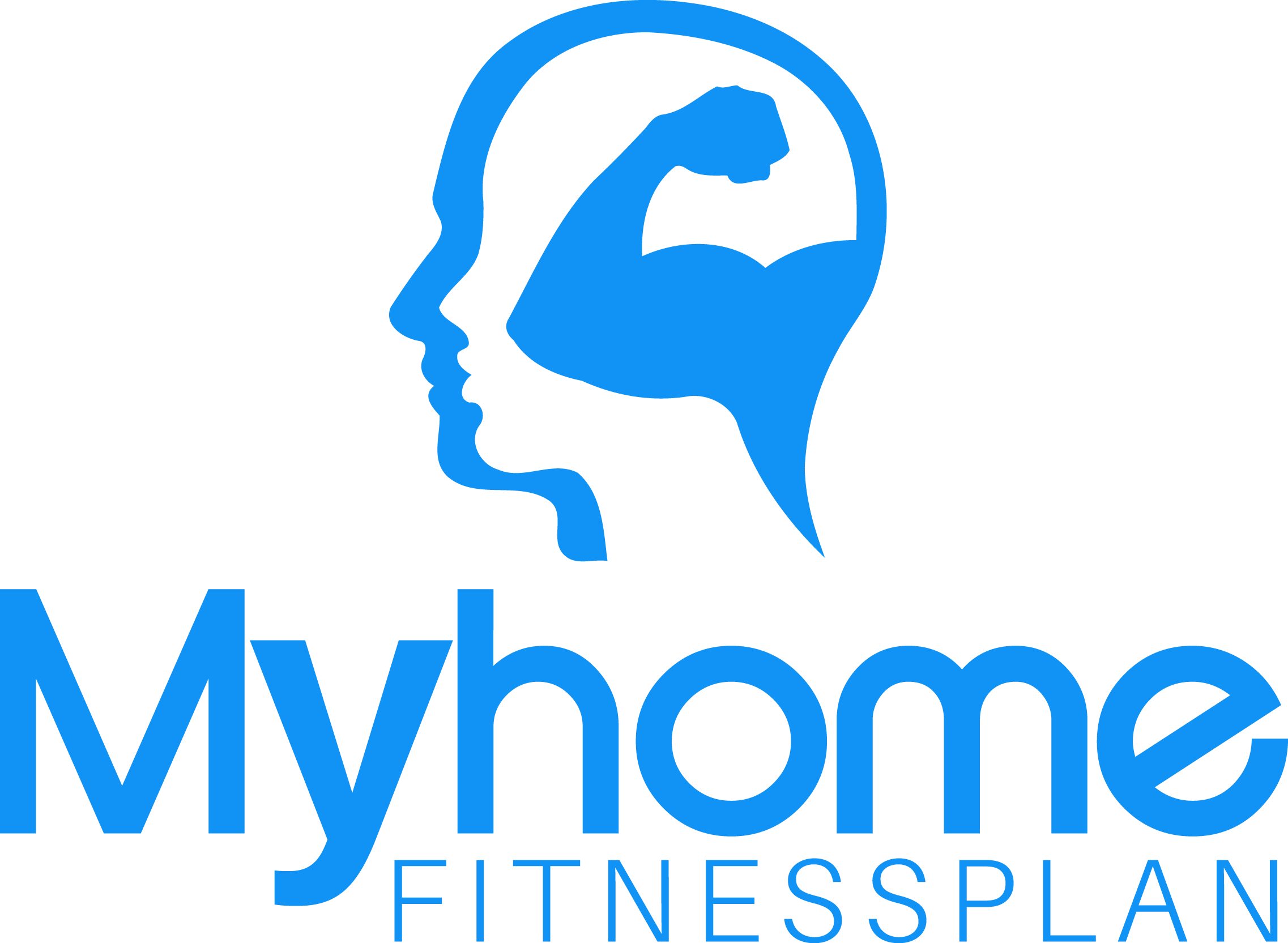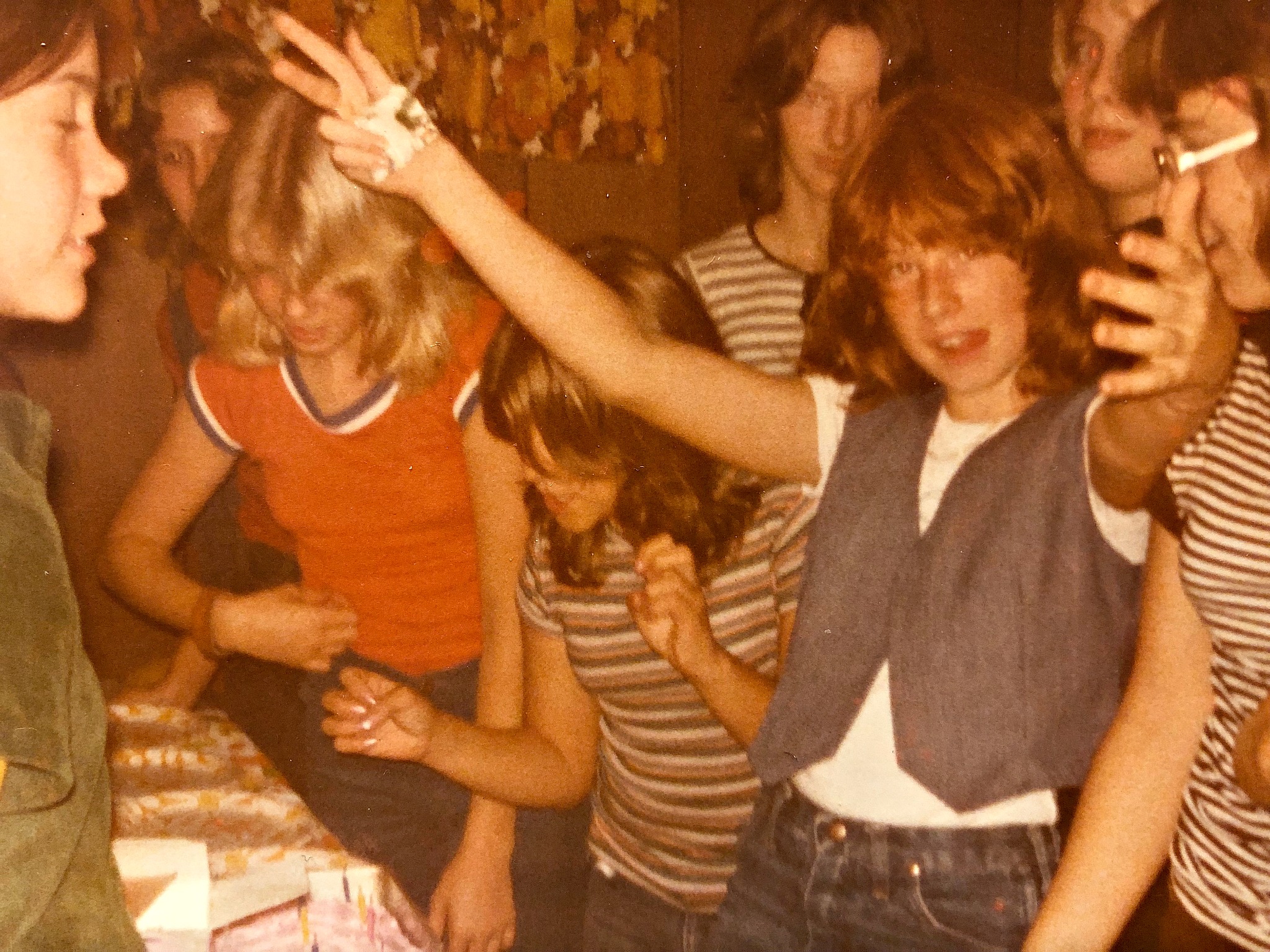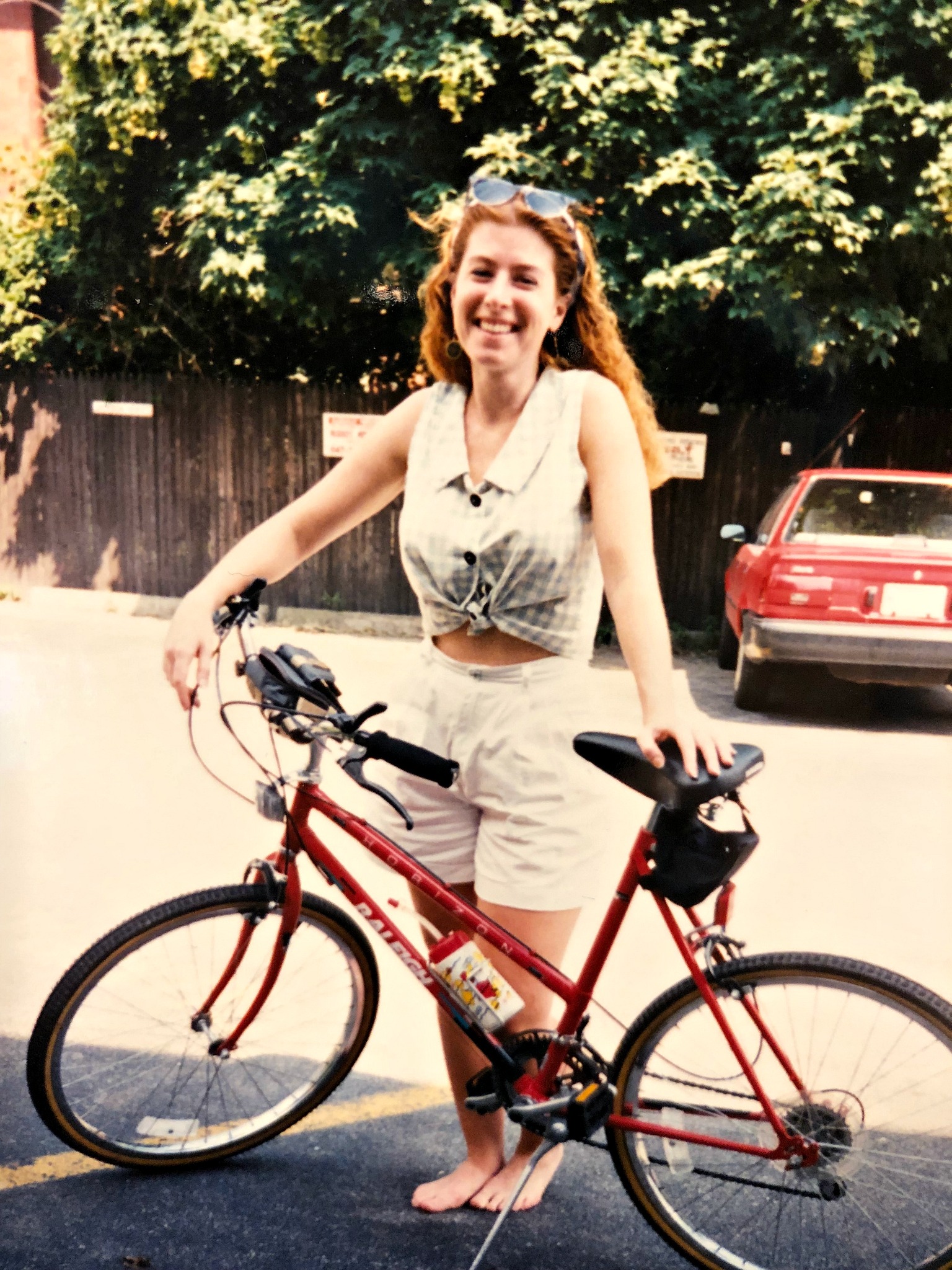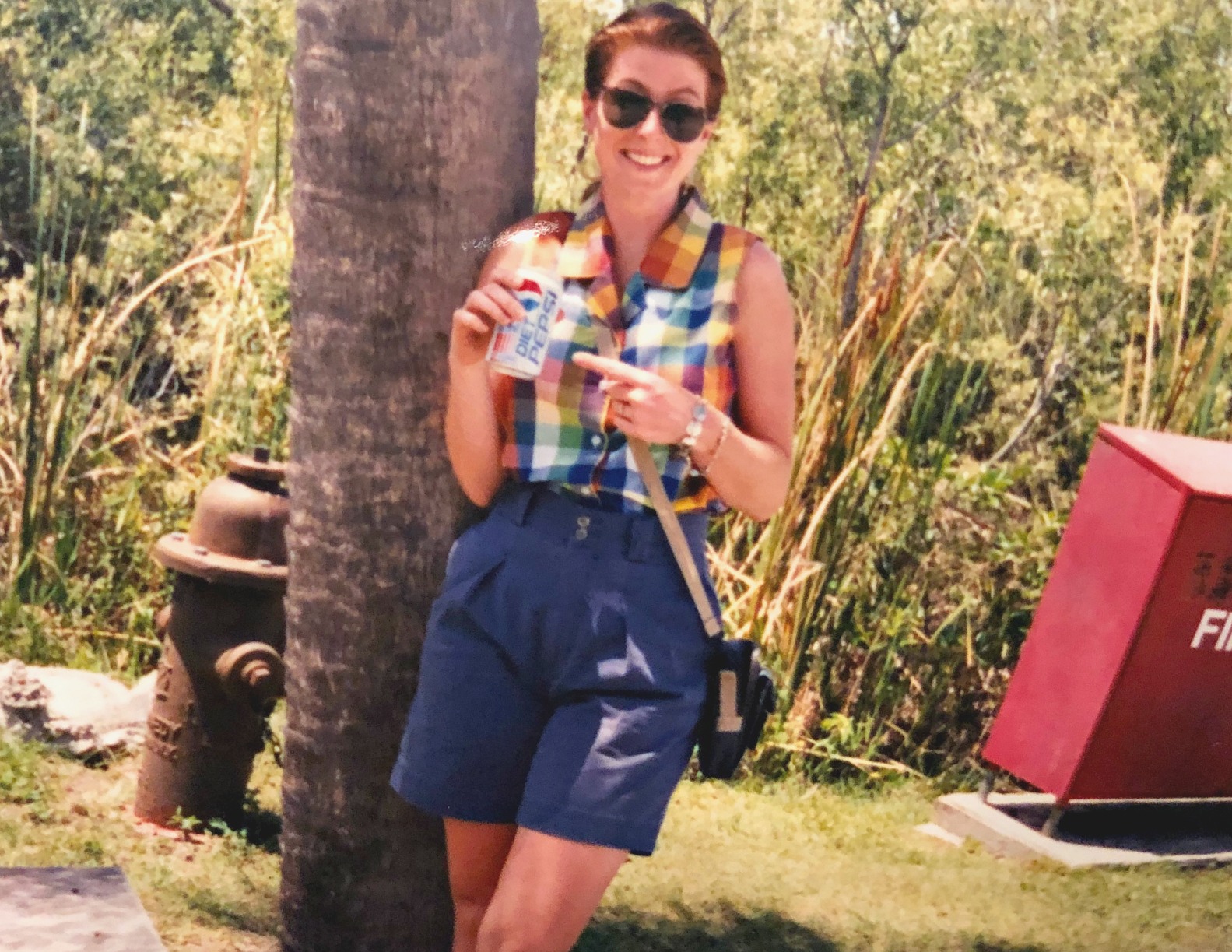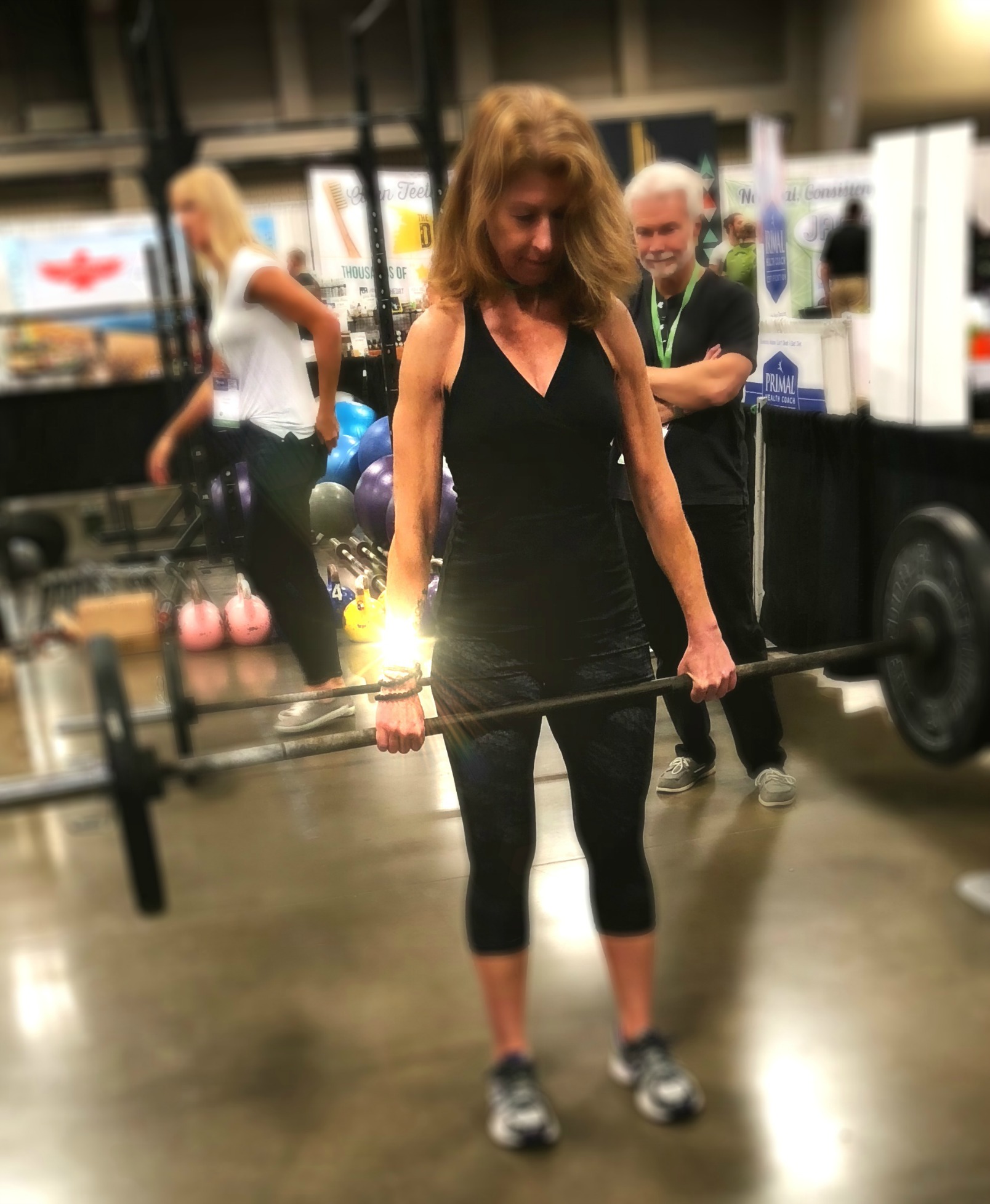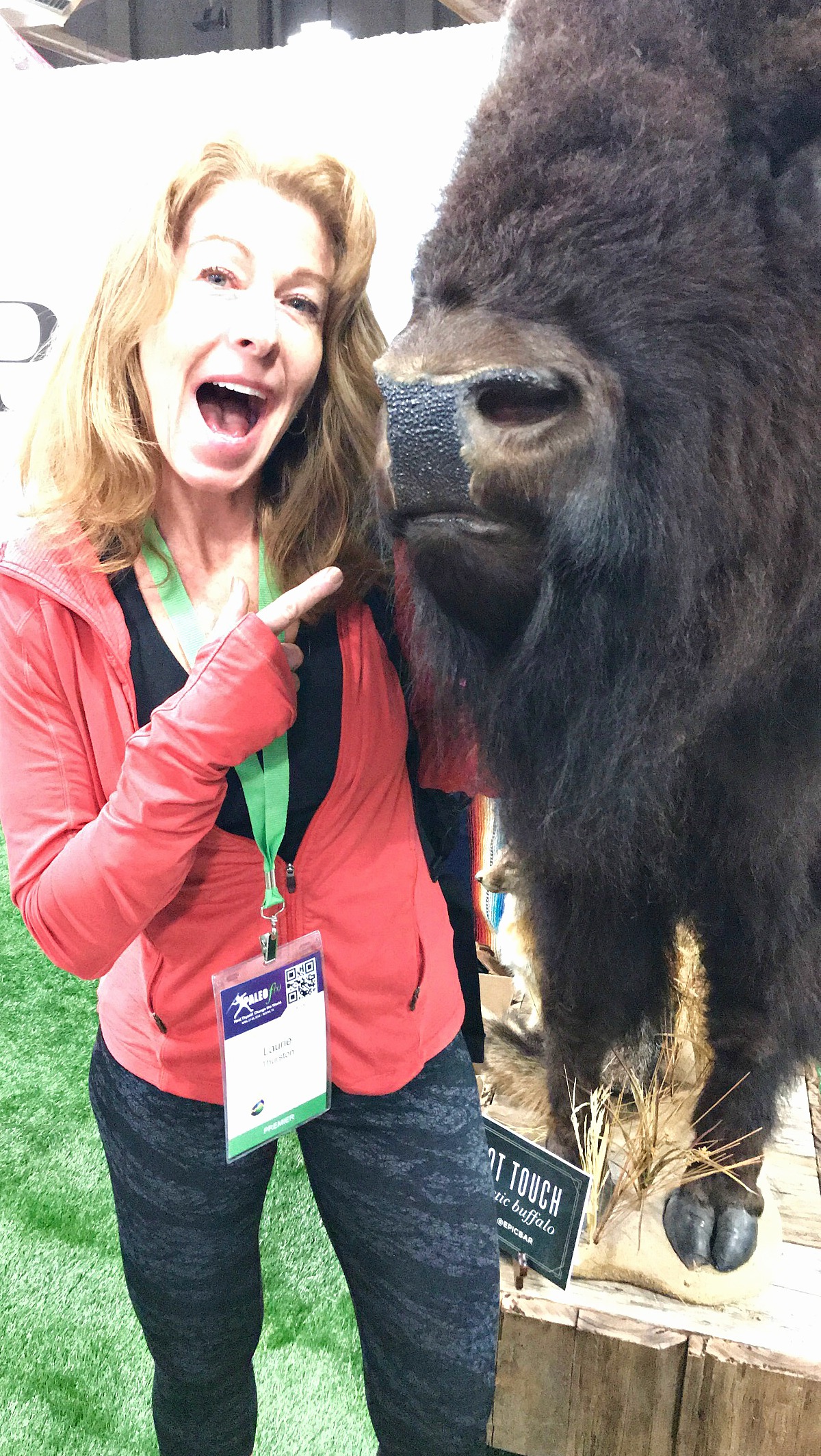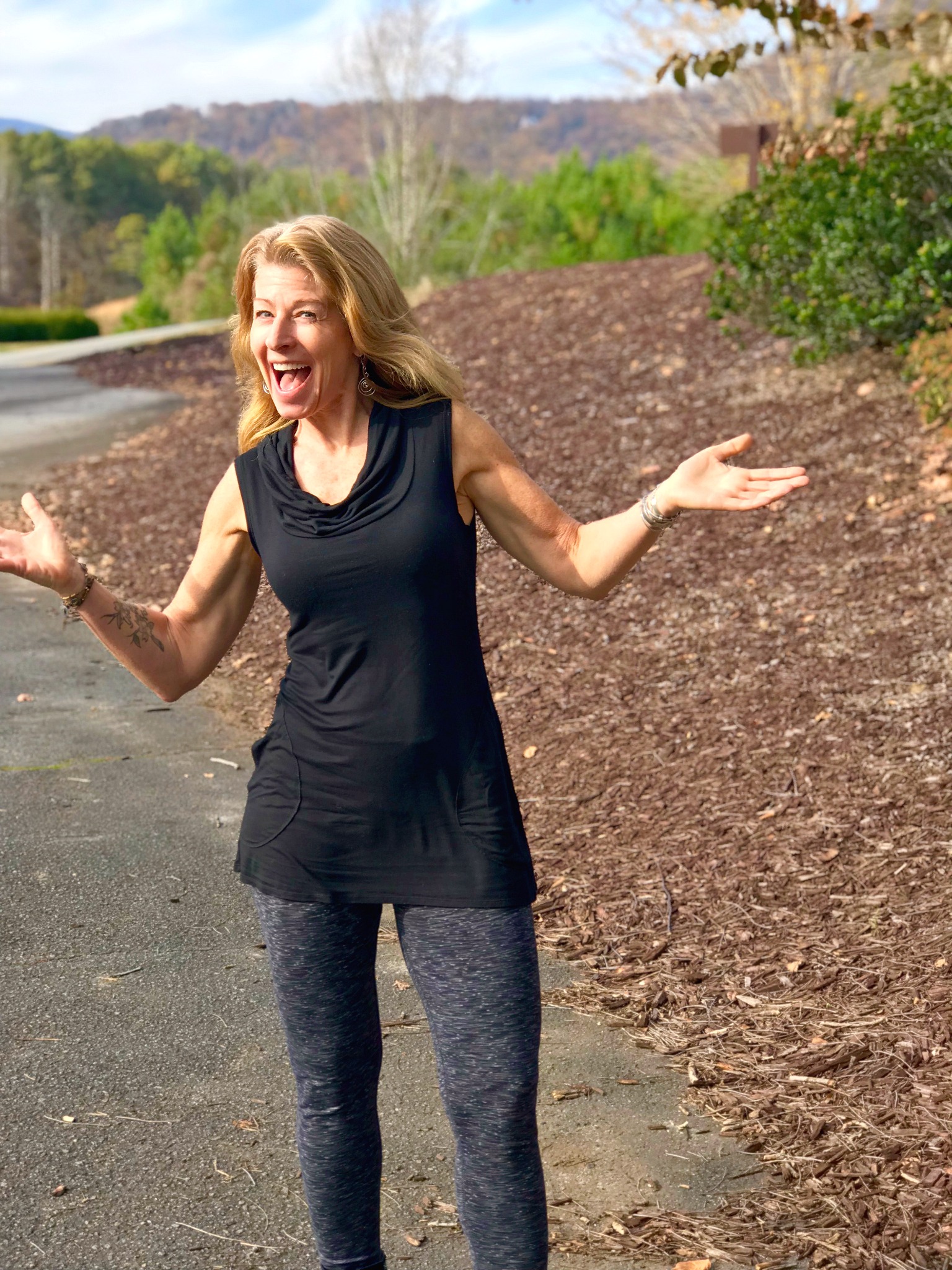"The Day You’re Told You're Fat"
by Laurie Thurston
"Chubby Genes" |
|
If you’ve ever had issues with your weight or self-image, you most likely remember The Day that triggered the avalanche of self-doubt, that precise moment which sparked a sudden perceived need to change. While I could easily name many such instances in adolescence (as many of us can), I clearly recall that particular day which started this crazy mission to “fix” what I now know was never wrong in the first place: my weight. A routine physical for middle school: height, weight, how-are-you-feeling? 5’2, 115 pounds, I’m fine, thanks. That’s when my doctor told me and my mom that I should probably lose some weight. I honestly don’t remember exactly how tall I was or what I weighed, but I sure as hell remember how I felt: mortified. See, my mom was tiny: 5’ 2” on a good day, she rarely saw the scale go above 107. And her mom was even tinier. But I was already Mom’s height and still growing. I’d never really thought about it, though; all my friends were taller than their moms. That was a good thing, right? After we came home, my mother shared with my dad what the doctor said. I remember him laughing, telling me that I must’ve inherited his mother’s “chubby genes". This was the beginning of the relentless teasing, the unending commentary. I’m sure he meant no harm. He talked about how his dad had teased my grandmother all the time, calling her “Chubs”. But it wasn’t at all funny to me and it did cause harm. And so it began: the start of restricting what I ate, over-exercising, hiding food, refusing to try on new clothes, obsessing over every new bump, bulge or stretch mark. I. Was. Twelve. |
Our food routines were more dependable than our mailman... |
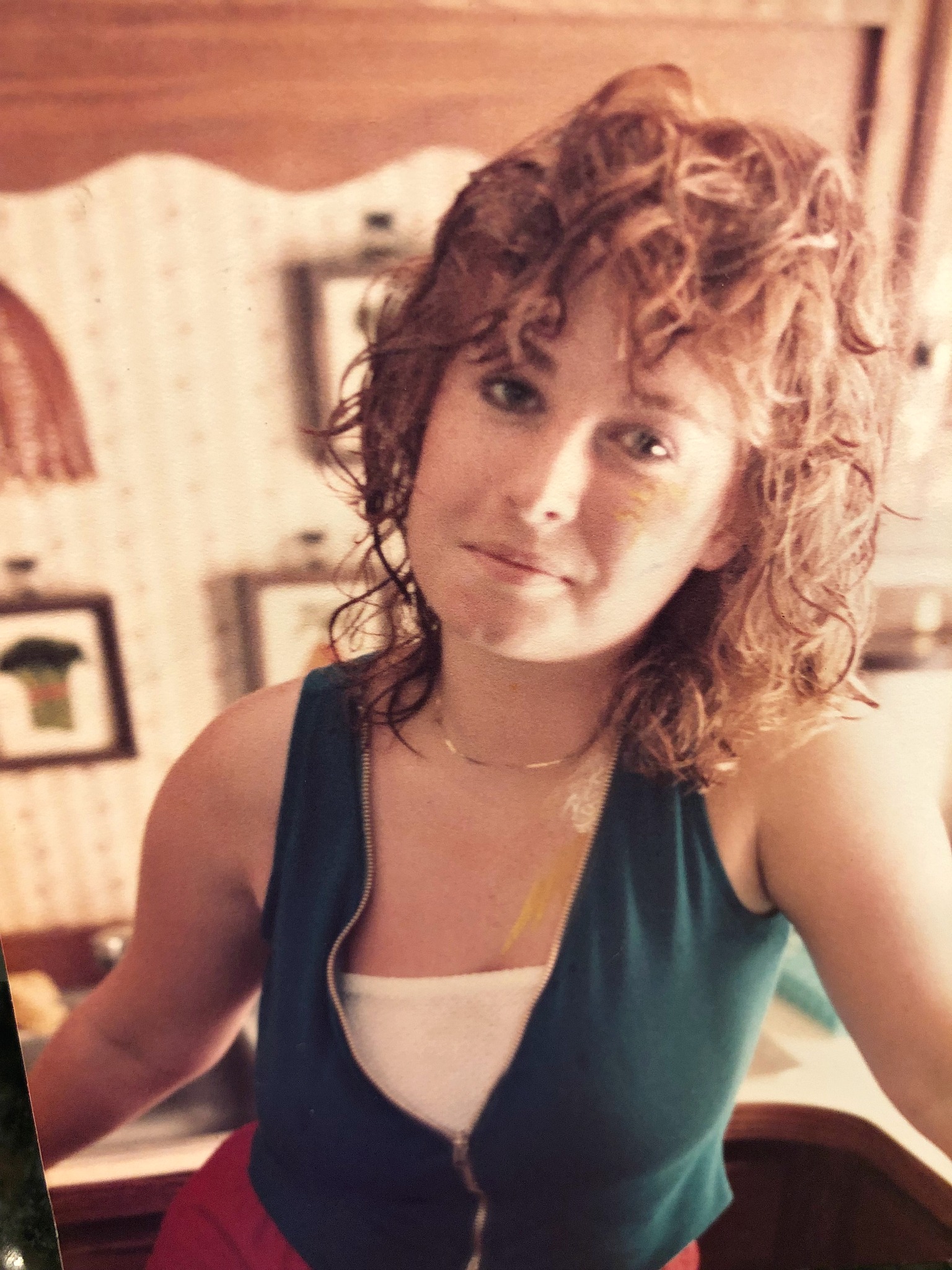 Summer before Senior year high school.
Not happy about getting my picture taken. Summer before Senior year high school.
Not happy about getting my picture taken. |
|
This was the late ‘70s and I lived in a working class neighborhood in Upstate New York. Dinner was served every night at 6 p.m. with several slices of white bread piled on a Corelle plate beside a stick of margarine. Unless it was spaghetti with Ragu sauce: then it was a loaf of French or Italian bread from Giuseppe's down the street, but still with that stick of margarine. Every meal was also a processed carb fest: pasta, white rice, white bread, white potatoes, egg noodles, orange juice. Breakfast came in a box: Rice Krispies, Frosted Flakes, Froot Loops, orange juice, pancakes or -- on Christmas -- Sara Lee coffee cake. From-a-mix brownies and cake lined the counter every day. And don’t forget the cupboard staples: Oreos, Chips-Ahoy, Lay’s potato chips. Pretzels (always the rods, never the twists) and Saltine crackers. Sunday nights: Pontillos Pizza. The food routines were more dependable than our mailman. Thing was, my parents weren’t overweight. Neither were my younger sisters. Only me. I ate the same things they did, but I ballooned. They could stop eating when they were full: I never felt full. Shame. Embarrassment, yes, but never full. Dad had his beer and cigarettes, ate his nightly bowl of ice cream or piece of cake or pie. Mom’s daily breakfast consisted of black coffee along with a small bowl of Rice Krispies topped with whole milk, sliced green banana and a teaspoon of sugar. Following breakfast, there were snacks around 11, lunch at 1, more snacks after school, dinner at 6, another snack around 8....Repeat at 7 a.m. the next day. |
Uncomfortable, out of shape, and desperately self-critical |
|
Flash forward to me at sixteen, add in the birth control pill to help my heavy periods and a boyfriend who loved to eat at Pizza Hut and it was Game On. My size 7s shrunk to the back of the closet as my size 10s grew increasingly tight. At 5’ 6”, I hit 150 and cried when I stepped on the scale at the doctor's. He told me my stretch marks made me look as if I'd already had three children. The shame I felt. There are no words. I refused to go back to the doctor after that. I remember so many awful moments: not fitting into a borrowed dress for prom, not being hired at a movie theater because I was “too big”, neighborhood kids pointing and laughing when I jogged past where they played. Convinced I needed to eat less, I wound up eating more. Sneaking food and eating alone became my new secret. My anxiety skyrocketed and I didn’t understand why. I thought I was going crazy. Here’s the thing, though: I look back at the pictures of me at 12, 13 and I looked fabulous: strong, athletic even. I swam daily in the summer, and played outside until the sun set. As pre-teens, we walked and biked everywhere. No internet or phones or video games existed to keep us inside. Those stupid doctors. To plant that seed of self loathing. Who the hell were they to do that? So at sixteen, when my blood pressure and weight exploded within months of being put on The Pill, did anyone question that? Nope. They just told me I needed to get my weight under control or I'd be looking at long term health consequences like blood clots or strokes. No one once talked about to me about food quality or hormones. And I didn’t know what I didn’t know, so I never asked; I was raised to comply with authority figures. I simply blamed Grandma’s “chubby genes" and thought I was doomed. |
All you can eat...until you can't |
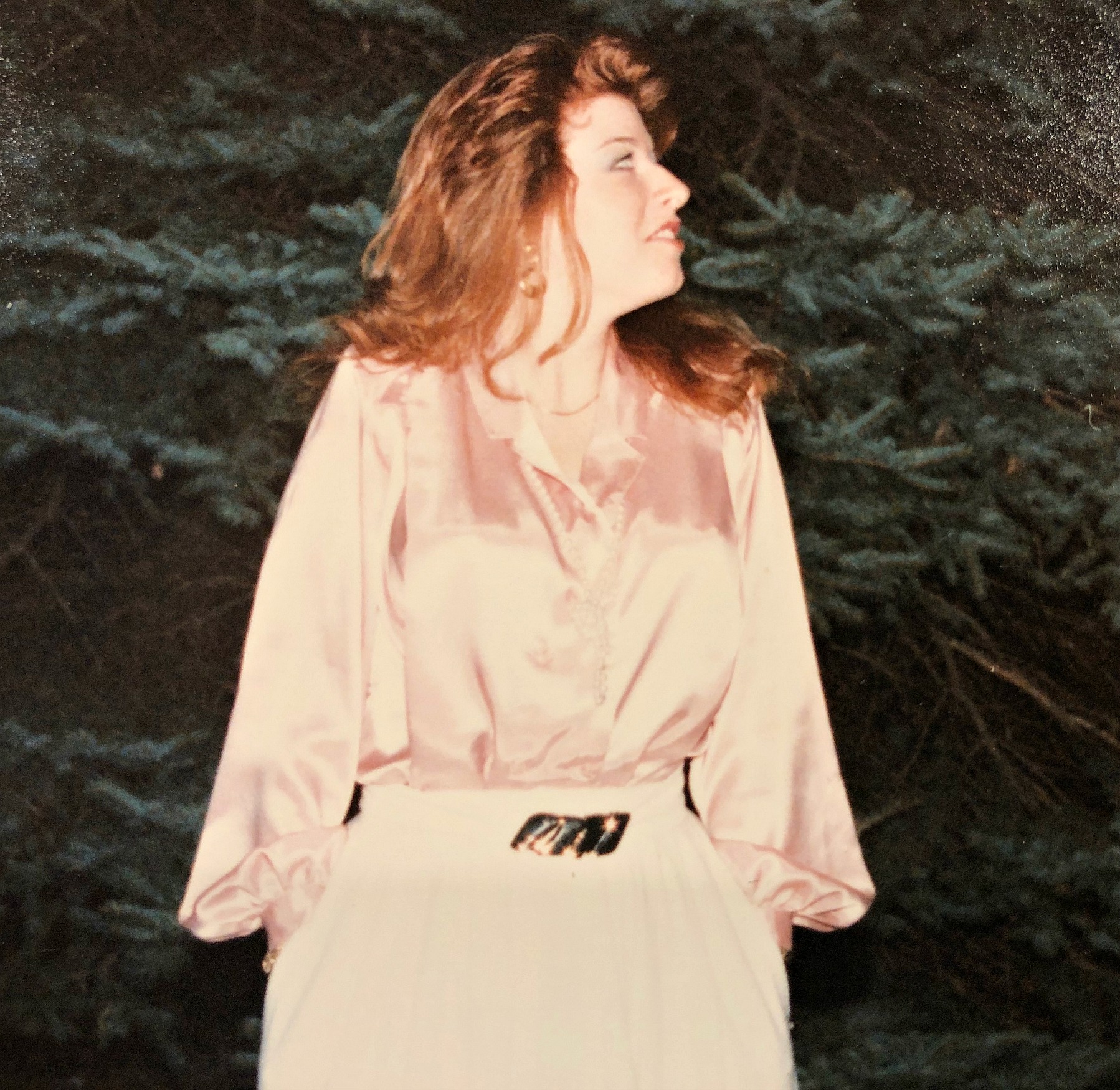 Near my heaviest weight Near my heaviest weight |
|
A year later, with genes in tow, I headed off to college. I entered my Freshman year at SUNY Geneseo in 1983. Soon, the weekends of drinking and daily all-you-could-eat access to dining hall food nudged me to 180 pounds. Looking back, I honestly don’t think I ever ate anything that wasn’t processed: cookies, donuts, Frosty’s from Wendy’s, french fries, beer, Jiffy Pop, nachos, pizza, cake, Beefaroni out of a can at 2 a.m. after the bars closed. I think now about how I ate back then and wince. How did I not know how bad that stuff was for me? Thing is, the worse I felt about myself, the more I drank, the more I ate. I don’t think people ever realized how insecure I felt, though. My typical wardrobe consisted of Lee jeans, cowboy boots and flannels over black concert t-shirts; my attitude was a mix of swaggering confidence with a generous side of sarcastic humor. Some people even thought I was badass. And I was pretty smart, too, a strong academic. But get invited to go swimming? Don’t have a suit. Asked to dress up for an event? Sorry, can’t make it. I’m not feeling well. And then the start of Sophomore year: a misdiagnosed strep throat which led to being given the wrong medication that caused all sorts of infections knocked me out of commission for a month. I took a short leave from college, slept on my parent’s couch for three weeks and barely ate. I lost fifteen pounds. But, after, I felt really good. Once the bacterial infection cleared, I felt better than I had in a couple years. And my clothes were loose. I’d even been able to rescue some pants from the closet that I hadn't worn since high school. I returned to the dorm later that fall and everybody noticed, made comments. My weight loss was celebrated. And, did I mention, I felt so damn much better? I decided maybe it was time to cut down on the amount I was eating: the cookies, the pan pizza, the Friday happy hour pitchers, that 2 a.m. Beefaroni and maybe stop buying so damn much Sara Lee cake. I really didn’t change what I ate, just the amount. And it worked: I kept off the weight I’d lost and even dropped a bit more. |
The first time I’d felt in control |
|
By the start of my Senior year of college, I was living back with my parents and working full time as a social work intern at a local children’s center. I was now probably down to a curvy 155 by this time. I’d traded in my jeans and flannels for flowy skirts and tops, though I kept the cowboy boots. I was feeling pretty fabulous. And then I met a guy and, months later, we got our own place. Though I’d given up jogging outside due to feeling too self-conscious, I’d begun exploring my neighborhood by foot and even bought a bike. A year after I graduated college, we moved to downtown Rochester. There, I discovered aerobics at my local Y and would sneak in the back wearing sweats and a baggy t-shirt. I remember how crazy sore I was after taking those first few classes, but I loved how strong I began feeling. How capable. It was the first time I’d felt in control of my body. And my body rewarded me by changing even more. Since I lived in my own apartment now, I could also control what made it home to my cupboards. I actually began eating real food for the first time: vegetables, salads, fruit, cheese, yogurt. No more Giant bread with a stick of margarine. No more pans of brownies. No more Froot Loops. Well, maybe still the Froot Loops: they were fat free after all…As were whole wheat bagels, soft-serve frozen yogurt and Snackwells. It was the late ‘80s, my friends. We were all “feeling the burn” and being taught that fat was our nemesis. By my early 20s, I was down to about 135 pounds. I spent my days carb grazing every two hours, consuming virtually no fat, and working out twice a day. Pass the Twizzlers, baby, I'd found the key to healthy living! Or so I thought. |
"Confessions of a Carb-Addicted Cardio Queen" |
“Nothing tastes as good as being thin feels”
|
|
That was my daily mantra in my early 20s when I was convinced I’d found my “sweet spot” for weight loss: simply work out two to three hours a day and restrict calories, especially fat. During this time, I was working full time as a sociotherapist for that same children’s center where I’d been a social work intern and had cobbled a couple more part-time gigs on the side to help pay the bills. I'd also decided to head back to college to work on my Master’s degree in secondary education. It's really no coincidence that my two part-time gigs centered around the two levers I’d learned to utilize for controlling the number on the scale: fitness and nutrition. In addition to my new gig as an aerobics instructor at the YMCA, I began as a nutrition counselor at Slender Center. My days became a blur of work, school, exercising, counseling, more work, more exercising, studying and writing. My typical eating day looked like this: a couple of Diet Pepsis, one or two whole wheat bagels and some non-fat Yoplait yogurt with a banana in the morning; another Diet Pepsi and bagel in the afternoon along with some fat-free frozen yogurt; Tootsie Rolls or Twizzlers mid-afternoon with more Diet Pepsis and a dinner of -- you guessed it -- another bagel with maybe some tuna (in water, plain, no mayo) on a bed of iceberg lettuce with some cubed melon, sliced strawberries and grapes and -- yup -- more fat-free frozen yogurt for dessert. My goal was to keep my protein around 45 grams a day (as recommended by the RDA, not to mention all the fitness magazine articles I devoured), maintain a fat intake under 10 grams and the rest, well, you guessed it: carbohydrates. I religiously followed the Food Pyramid: 6-11 servings of whole grains, 3-4 servings of dairy, lots of fruit and some vegetables, minimal meat and limited fat. The folks at the gym where I worked encouraged this low-to-no fat approach as I continued to drop weight. I was 5' 6" now and this way of eating and training got me back into those size 7s and under 130 pounds for the first time since 8th grade. And then. |
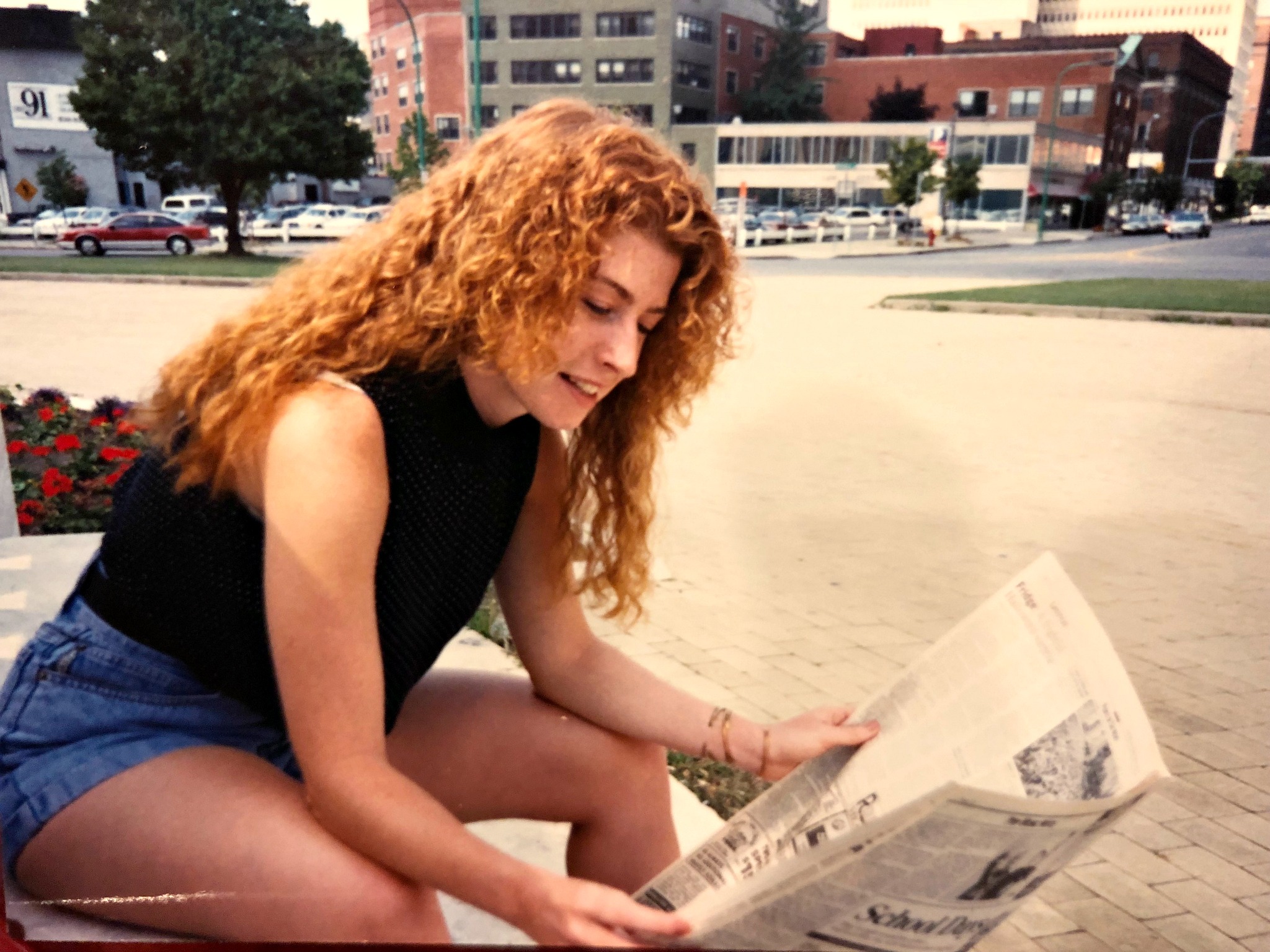 On the carb rollercoaster On the carb rollercoaster |
Everything works, until it doesn’t
|
|
Time to inject a side note. This all makes my life sound as if losing weight was my only focus. It absolutely wasn’t. Don’t get me wrong, it was something I spent considerable mental energy on every day, but I cared about much more. Entering my mid-20s, I had a long list of goals which kept me driven: maintaining a 4.0 in my Master’s program, publishing my writing online and in print, readying my first young adult manuscript for submission. I’d found my passion working with teens struggling with severe emotional challenges, got the opportunity to direct a high school program and began the guardianship process for my middle sister who had profound mental retardation. I also volunteered with a local wildlife rehab center as well as an owl and hawk sanctuary and even a no-kill cat shelter; I took writing, photography and pottery classes. Once I could afford not to teach summer school, I began traveling every summer break in some volunteer capacity: helping wildlife biologists in Yellowstone and the Smoky Mountains, being a hiking leader in Colorado for inner city teen girls from Boston, traveling abroad with high school students in an ambassador program to places like Great Britain, Australia and New Zealand. For me, my weight became that one thing that seemed to elude my Type-A drive and focus. And I was convinced, if I could figure a way to finally dial that in, then I'd have even more energy to devote to what really mattered. But, like all good things -- once that tipping point is reached, once the saturation level has been maxed -- something inevitably causes the precarious juggling act to crash. And crash, I did. My body began to rebel from all that cardio: I got shin splints teaching aerobics four times a week and had to give up my classes. During a run in Florida, I tripped in a puddle that was deeper than I’d expected and knocked four disks out of place in my neck. So long high impact. And once I began my career as a full time high school teacher, the change in my schedule meant I was no longer able to maintain my daily two to three hour exercise routine. The weight I’d wrangled into submission began creeping back up. Averaging a pound a month, I was back to 135 by the end of my first teaching year. The next decade proved a constant battle of gaining and losing the same ten pounds, then adding a couple more. Of course you know the drill: restrict, overtrain, “work it off”, count those fat grams. By the time I was 35, I was up yet another ten pounds. 145 appeared to be my “new normal” and there seemed nothing I could do to make that scale budge. By this time, my soon-to-be-husband and I had moved from our downtown apartment into our first house. A couple dogs, a few cats, some home improvement projects and a foray into garden landscaping gave me some new ways of moving to “burn calories”. Still eating fat free cereal, bagels, Diet Pepsi, and fruit all year long, I attempted to counterbalance the consumption with constant movement. I even put a makeshift home 'gym' in my basement: a treadmill, yoga mat and rubber-coated five and eight pound dumbbells. It was Rochester, after all. It got stupid cold in the winter and since I’d jacked up my shins, back and neck from all that running and aerobics, I needed something that required less pounding. I had to find a new way to move that wouldn’t strain the discs that I knocked out of place. That's when I borrowed an old weight set and bench from my dad, some "real" dumbbells and set that up next to my treadmill. |
I’m too young to be falling apart
|
|
By my early 30s, the food intolerances began. I’d developed enough crazy digestive problems to force me go see a doctor. I refused to let him tell me my weight or blood pressure, though and, of course, he had no clue what was going on. He referred me to specialists who took blood samples and made me drink stuff to track my digestion. Nothing is wrong with you. But they did tell me I needed to find a way to manage my stress and lose weight. Still, no one bothered to ask me what I ate. My primary care doctor just shrugged and said, “Well, you are getting older...” I was 35. Seriously? By then, I was probably back up to nearly 150 again and could not figure out how to get off the damn rollercoaster. Fed up, I stopped going to specialists because it only stressed me out more and began keeping a food diary. I thought, if I could pinpoint what exactly was making me feel awful, I’d just cut that out and maybe that would lead to permanent weight loss. Again, this was the late 90s, almost 2000. I’d been on birth control for nearly 20 years by this point and I’d now developed asthma -- regular as well as exercise induced -- began experiencing some swelling in my joints and had occasional outbreaks of eczema: all of which ran in my family. Those pesky genes again. All this meant that I couldn’t run anymore, even if I wanted to. Then I discovered through my food journal that dairy seemed to be a significant trigger for my gut issues. Diary? But that was where I got most of my protein. I’d never been a huge meat eater and, while not officially vegan/vegetarian, I’d steered clear of meat and animal products for years due their fat content and my guilt in consuming them. How could I even think of giving up dairy? Maybe I could try soy milk and yogurt. By now, the big 4-0 was on the horizon and I’d been diagnosed with an anxiety disorder, asthma, irritable bowel syndrome, potential arthritis, eczema and -- surprise -- depression. In addition to the birth control pill, my prescriptions included Advair, an emergency inhaler, hydrocortisone and Zoloft. I was quickly becoming one of those people who'd need that weekly pill organizer. |
Not once did any of my doctors question what I was eating |
|
As I type this, my heart is breaking. Not once did any of my doctors question what I was eating. Instead, they applauded my whole grains, non-fat dairy and five servings of fruit a day. None of the doctors suggested that maybe I had some control over my health via nutrition. In fact, that same primary care doctor who told me “well, you are getting older” misdiagnosed a leg infection that I had in mid-May of ‘05. He said the rash and swelling I had in my lower legs was “probably razor burn” and, two weeks later, when I wound up in an emergency room with swelling so severe in my calves that my ankles and feet had turned purple, the on-call physician recorded on my chart that the swelling and bruising were a result of stress fractures from “high impact gardening”. Yeah, okay. A week after that, I landed in a wheelchair because I was unable to walk. Fortunately, I was referred to an amazing dermatologist and the two of us scoured the internet. In less than two days, I was correctly diagnosed and treated for a rare infection that resulted from an untreated respiratory illness. After two weeks on Prednisone and, I was off crutches and on the mend. Long story for another day, but -- basically -- like the misdiagnosed strep of my 20s, this illness forced a huge disruptor in my eating habits that led to yet another swift drop in weight. No longer able to "work it off”, I once again restricted my calories considerably. Between that and the steroids, I’d dropped about ten pounds by July. That was the summer of 2005. I was burned out both from feeling awful all the time and from fifteen emotionally charged years in the classroom, so I applied for a half year sabbatical from the program I’d built and directed for at-risk teens. I wanted to learn more about digital literacy and how I could maybe bring that back into the classroom. I'd been doing some writing and presenting at state and national conferences and wanted some time to pursue this new path. My proposal was accepted. And then Hurricane Katrina rocked New Orleans. Once I saw those images, I knew I had to do something, so I offered to spend my sabbatical helping teens displaced by Katrina. And soon after that, I asked for a separation from my husband. Yeah, there was a lot going on. On my own that fall and no longer teaching every day, I plunged into garden and home projects, finally weaned off the Prednisone from that leg infection and planned my extended trips back and forth to New Orleans. I didn't have time, nor the desire, to eat. My weight plummeted again, to its lowest since my aerobics days: 123 pounds. I remember that well, it was the first time in my life I bought a size 4 pair of jeans. Banana Republic. Low rise, boot cut. All it took was a life threatening illness, prolonged stress, an unexpected divorce and a few new gardens. But, as is life, time passes. Nine months later, I was back to my daily routine as an alternative education teacher. Stressors from the job and the divorce had begun to wane (or so I thought). And, as my world began to relax, my sights shifted and seemed set on a change: to move from New York and try a life in Portland, Oregon. I know now that my psyche simply needed a chance to start over, to escape memories, to challenge myself with something new. I get that, lots of people experience it, right? It’s even got a name: Midlife Crisis. I try to pride myself in the ability to see silver linings, though, so I thought of this as my Midlife Awareness. Without allowing myself too much thought, I decided it was time to resign from my teaching job of seventeen years, leave the only home I'd ever known and try something new. It could only get better, right? |
"Life is what happens when you’re making other plans" |
|
My move to Portland was the most challenging event I’d faced in my life to this point. Having only lived in Rochester, the cross country change proved far more difficult than I ever expected. The grief seemed overwhelming: leaving my home, my gardens, the program I built, my career, even leaving some of my pets behind with family and friends. I had no idea how much I’d struggle. After this challenging first year, though, I’d begun to settle in. Despite moving at the start of the Recession in August ‘07, I landed a great job with the Gates Foundation working on their Small Schools Initiative. By August '08, I made a second move across town into a wonderful condo with walking paths nearby and a gym on site. It was time once again to focus on me. My weight had, of course, climbed yet again. The stress of the move, my discovery of red wine and all the wonderful dairy and gluten-free options in Portland meant my sugar consumption had increased considerably. My choices may have seemed “healthier”, but they were far from it. I knew the trick, though, right? Restrict calories and log more hours at the gym. No worries. And then. I have to share this next part of my story because of what I’ve learned from it. How I discovered that it's only when life slams you sideways that you truly begin to understand the correlation between mental and physical health, the lesson that became the through line of the next decade. August 2008. The phone call that changed my life: my sister Cheryl, the one I had guardianship of, who I’d left in her group home back in New York until I’d gotten settled in Portland, had died. Unexpectedly, tragically, due to an act of neglect by her caregiver. There was a trial, the caregiver did some jail time. I was destroyed. That year is a blur. Honestly, I don’t remember much. I spent a lot of time on the couch, staring at the ceiling. A lot of time holding my cat. Guilt and grief wrestled each other in my heart every day. Surviving to the next morning was my only priority. And, as the first year anniversary of Cheryl's passing approached, I applied for a teaching job and returned to the classroom in a charter school I'd been working with through the Gates Foundation. I needed to be around young people again. I needed to teach. To heal. The next couple years ushered even more changes: yet another move to a house in Northeast Portland in 2011, planting a new garden, adopting a couple more cats. I’d joined some Meet Up groups and became an organizer: I took people dancing and hiking, hosted happy hours and concerts. I kept busy, wouldn’t let myself think. If you didn’t know me, you’d see my social media pictures and think, this girl has everything: a great home, tons of friends, a fun-filled life! What you wouldn’t see are the times I begged off going out because my depression or IBS symptoms had flared, or I couldn’t fit into a pair of pants that I’d been able to wear three months prior. My weight was all over the map any my mood swings matched it. The drinking and partying had numbed my grief, but my health was unraveling. I was looking at 45 and my body was changing inside and out. This lifestyle was not sustainable. |
You can’t out-train a bad diet
|
|
Summer of 2012. Year five living in Portland and I remained on that roller coaster, but I simply pushed myself harder in and out of the gym in order to control the scale. I began logging serious miles running and hiking, started taking Body Pump classes and even worked with a personal trainer for a few weeks to get ready to climb Mt. St. Helens. My body fat percentage was around 26% and I weighed 145 ish, but I was convinced I could change that if I ran more and crushed it in the weight room. Thing was, I wasn’t willing to give up partying or my way of eating. So, of course, my numbers didn’t change. Then a car accident (I got rear-ended) and a twisted ankle (yeah, don’t ever run in a Foam Fest Race) led to a severe lower back injury. Running was off the table again and lifting proved nearly impossible. I did manage to summit Helens, though, just did it at the end of the summer after my ankle had a chance to heal. Stubbornness is a thing with me. Plus, I needed to do it for my mom. You see, in July 2012, she’d been diagnosed with ovarian cancer. Life, man. It has other plans, I’m telling you. But losing Cheryl had taught me how to prepare for and navigate loss. And my past neck injury and leg infection had taught me the importance of giving my body time to heal. After my mom passed in September 2012 -- on my birthday -- I knew it was time to make a change. A real change. My mental and physical health were in crisis. On the outside, you might look at me and think all was well, but inside, I was a total wreck. And my biomarkers showed it: pre-diabetes, low cholesterol, unstable blood pressure. Over the next couple of years, I began my stair-step into health. First, I got a referral from my primary care doctor to see an acupuncturist. I needed to address and repair the back pain; it had become unbearable. Next, I needed to get my head straight. I even saw a counselor a few times. Though therapy is not my thing, it did give me the validation that I needed. Talking with the counselor confirmed what I knew in my soul to be true: I really had been through a lot in a few years: a divorce, the cross country move, financial struggles, health challenges, the sudden and tragic loss of a sister then a mother, two more moves, a breakup of a four year relationship, major job changes. I guess I just needed to know that I had the right to feel overwhelmed. Crazy, huh? That’s when I reached out to connect with a girlfriend from back east. Someone who knew me, knew Cheryl, knew my mom. I didn’t have that sort of connection in Portland, but I needed it desperately now. So I re-grounded myself, reconnected with the things that I knew brought me real joy. I got back into writing; I began reading again. For the first time since I’d moved to Portland, I felt like I could breathe. By the summer of 2014, I felt empowered to tackle what I knew was the last step in reclaiming my health: my diet and approach to exercise. The first to go was the drinking. I stopped partying every weekend. All that alcohol led to crazy moods, blood sugar swings and poor decisions. Since removing dairy back in New York, I’d seen my asthma, inflammation and eczema disappear and I’d been off Zoloft since Cheryl passed. I knew there had to be a way to tackle my anxiety, depression and IBS issues without medication. For the first time, I began to explore the connection between nutrition and mental health. It was time to take control. Cutting out diet soda and grains came next. If you’d have told me when I was 25 that I'd survive without a case of Diet Pepsi and a couple dozen bagels a week, I wouldn’t have believed you. But I knew that stuff was causing my sugar cravings, triggering binges and creating my mood imbalances. They had to go. Diet Pepsi was replaced with sparkling water. To get my caffeine hit, I learned to appreciate tea. Then I kicked gluten to the curb. That was another tough one: gluten is in everything. I substituted my morning bagel with oatmeal for a time, then quinoa here and there. But, within six months, I'd gone completely grain free. The result? My IBS disappeared. So did my anxiety and my bouts of depression. I began learning about the Paleo approach to eating. Christmas Eve 2014, I met an incredible man who happened to be a personal trainer and owned his own gym. He introduced me to High Intensity Training (also known as slow training). Talk about a workout! He, too, was eating mostly Paleo, and we began to date. I finally learned how to cook, embraced eating healthy fats for the first time and began throwing some serious iron around. I felt amazing. Simply by eliminating diet soda, processed foods and all grains, my weight steadily dropped on its own. By 2015, I had stabilized around 130. I'd replaced countless hours of crazy cardio with much shorter bouts of regular weight training; my body fat percentage dropped under 17%. I was off all medications, had no medical issues and was back into those size 4 jeans without even trying. A trip to the doctor showed that my triglycerides had plummeted from near pre-diabetic levels to a super healthy range and my HDL cholesterol levels had significantly improved. My blood pressure, resting heart rate and fasting glucose numbers were ideal. My doctor asked me what I’d changed and I told her, “I’m eating Paleo and lifting heavy shit.” I was finally healthy: inside and out. |
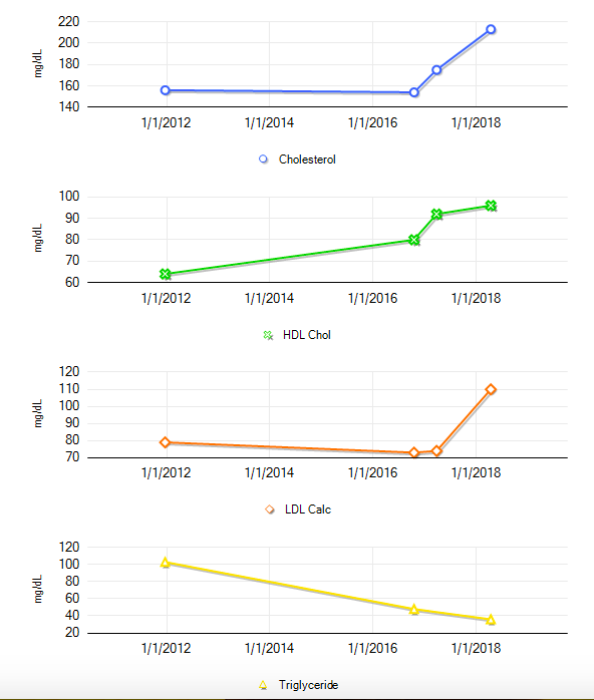 Triglyceride and Cholesterol Chart
2012: broken and sick
2015: after a year of Paleo and weight training
2018: after a year of Keto Triglyceride and Cholesterol Chart
2012: broken and sick
2015: after a year of Paleo and weight training
2018: after a year of Keto |
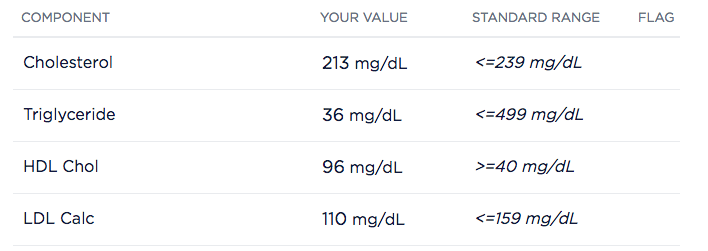 2018 biomarkers after a year of Keto 2018 biomarkers after a year of Keto |
Lift Heavy and Eat Real Food
|
|
Over the last three years, I’ve learned a lot about myself. I’ve learned what foods make me feel and perform by best. I’ve discovered that that being strong feels amazing and that daily movement should never be about controlling a number on a scale. As a matter of fact, I donated my scale to Goodwill three years ago. For me, lifting to be strong and capable means more than anything. I need to eat well to fuel that. I also know that being my best physically is a requirement for navigating life’s curveballs. Like losing my dad. This past December 2017, my dad passed unexpectedly. He’d never emotionally recovered from my mother’s death and had begun a downward spiral of failing health after losing her. I’d spent the years after my mom’s death flying back and forth to Georgia, cleaning Dad's house, establishing a home health care nurse, getting power of attorney. He refused to leave his house to live with me or my younger sister; his own depression and failing health clouded his decisions. One of the last times we spent together, he joked, “I haven’t exactly treated this body like a temple, you know.” When I was a teenager, my father had relentlessly teased me about inheriting Grandma’s “chubby genes” and, as an adult, he constantly criticized my healthy food choices. But, near the end, he admitted, “If I knew I’d live this long, I would’ve taken better care of myself. Like you do.” And so it is for him and for my mom as well as myself and my partner that I take care of myself. I have one body and one mind and I want them both in optimal condition for as long as possible. |
Just when you get it figured out... |
|
Has it been smooth sailing since? Hell, no. The target never stops moving. Since my change in fitness and nutrition habits, I’ve faced a couple setbacks: minor injuries from pushing too hard in the gym (tweaked back, torn shoulder) and repercussions from hacking my diet a bit too much (yes, you can overdose on Vitamin D). Trying out Keto was a great experiment and I learned a lot about nutrition, but the 85% fat didn’t work for me. I lost a few pounds, but I lost muscle. Not what I wanted. So it was back to higher protein and more carb cycling. All about that N=1. Then, in October 2017, just prior to my dad’s death, I had a very severe case of food poisoning. Or something. Who knows. All that was clear is that my gut became wrecked and I began having some pretty significant reactions to foods I’d never experienced before. The stress of this illness, then my dad’s passing in early December 2017 and yet another food poisoning event around Christmas sent my system into a nosedive. I might have been sick and grieving, but at least I was armed with knowledge this go around. Didn’t mean it was easy, but I knew how to rally myself: giving myself the grace and space to grieve, asking for help when I needed it, granting myself the alone time I craved to heal my emotional wounds. And since I’d been practicing a mix of Keto and Paleo for over three years by this time, I knew about Autoimmune Protocols and decided to cut out nightshades, eggs and nuts to give my leaky, damaged gut time to heal. Turned out, both nightshades and almonds were causing me all sorts of trouble. The body has a lot to tell us, if we'd only listen. By April 2018, I was healed, feeling fabulous and had my ticket for my first PaleoFx. I was 52 and healthier than ever. |
What have I learned?
|
|
I’m writing this on New Year’s Eve 2018. And it’s crazy looking back to see the bad habits that I struggled for decades to tackle. For me, there are several takeaways. First and foremost, I’ve learned that, to make a sustainable change in any aspect of your life, you need to have a solid “why”. Once I let go of “weight loss” as my goal and changed it to “be my healthiest self”, everything began to fall into place. I’ve found that -- for me, for now -- a semi-Ketogenic, low carb Paleo approach to eating real foods is what works best. I don’t feel any need to “cheat” since foods not aligned with this way of eating make me feel awful, wreck my sleep and gut and keep me from being able to work hard in the gym. It’s simply not worth it. As for training, I lift heavy a couple times a week, do a moderate workout the other three days and then, on non-lifting days, be sure to just move. I practice some functional training, walk and hike outside, do a few short sprints every week or so. I've easily cut my workout time more than 75% from my cardio days. I've discovered that more isn't better, it's just more. Better is better. Oh, and I just moved again three months ago. This house is bigger, it's a mile from my teaching job and we converted our two car garage to a personal training studio. I am digging the extra sleep and having no commute. And you should see the mature gardens I've inherited: all I'll need to do is weed and water. I know you can’t live life backward, but I really wish I could tell my former self to question those doctors, to tell her dad how much his teasing hurt, and encourage my strong, capable 12 year old self to just eat the damn cake. Today, I carve time to be outside as much as I can (despite Portland winters), hike when I need to hug a tree, read every day and write to figure out what I’m thinking. I’m currently halfway through my fourth young adult manuscript; I even have an agent, so, who knows? But even if I never get published, I won’t stop writing. It’s a lot like eating real food and lifting heavy shit: it’s simply something I choose to do every day in order to live my best life. Life’s trials will continue to challenge me, but I’m confident I’ve cultivated a mindset through learning what my body needs in order to thrive: real food, intentional movement and connection to people who matter. It’s all about being my best self so I can give back: to my partner, my sister, my students, or anyone who may enter my world. So, go ahead. Join me. Let's be spectacular together. |
Have A Great Story To Share?Do you have a great personal transformation story? We'd love to hear it! What Other Visitors Have SaidClick below to see contributions from other visitors to this page...
Starved |
